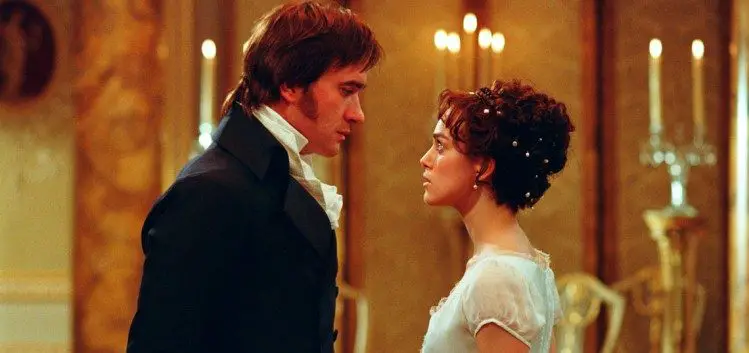By Grace Caylor
Have you ever watched a really cheesy Hallmark movie? Or read a romance novel that was too predictable and had practically zero conflict?
Certainly, as writers, we ought to write romances that are more natural and realistic, which of course means there must be conflict. Google’s first definition of romance is “a feeling of excitement and mystery associated with love.” Romance in and of itself is exciting and mysterious--and therefore holds the potential for conflict.
All romance stories can reflect a greater romance—one being intimately connected with Love Himself. The excitement and mystery our hearts crave for is God.
There certainly is conflict in our relationship with God all the time. Jesus continually woos us, the Bride, to Himself. We fall astray and run after an idol. He woos us back again. We experience the excitement of living for Him, the joy of obedience. He reveals mystery upon mystery of who He is, leading us into wonder and awe. And then we fall astray again, but Jesus ever patiently and tenderly woos us back again.
In the same way, there should be conflict in our romantic stories. As we depict human romances, we should make them realistic with plenty of conflict and tension. If there is no conflict and tension, your readers will get bored of your characters google-eyeing each other the whole story. Maybe the characters are enjoying it, but the readers aren’t.
Just like watching your friend with their girlfriend or boyfriend soon loses your interest, readers want more than everlasting bliss. Not only does perpetual happiness bore your readers, but it makes the romance come off as cheesy and contrived.
How can we avoid these tediously happy tales and create realistic romances with stimulating conflict?
Here are my tips about how to create conflict in a romance novel:
1. Create Outward Conflict that Imposes on the Relationship
Is there an earthquake that disrupts their date? A world war that the man must fight in leaving the woman worried he will never return? In Romeo and Juliet, the problem is their families. They come from two different families who hate each other. This prevents their romance from happening so easily. Nevertheless, because of their family’s strife, the two of them end up killing themselves, believing that the other is dead.
Outward conflict is essential to a good romance. Develop a plot outside of the sweet world of romantic love and watch how it plays into the romance and gives your story a kick.
2. Create Inward Conflict that Imposes on the Relationship
Outward conflict is a great way to add tension to your relationship, but internal conflict is where the real heart-wrenching conflict arises. Whether it be things they don’t like about each other, hurt from their past that causes tension, or simply a misunderstanding, there are many ways in which tension can be drawn taut between two lovers.
In the TV show Dr. Thorne, although Mary Thorne reciprocates Frank Gresham’s passionate love, she closes herself off to him believing she is unworthy to marry him, since she is an illegitimate child. Frank’s love for her only grows along with his determination to marry her. This heightens the romantic tension and makes the reader root for them to get together.
Create inward conflict in your romance, drawing taught the tension between the two lovers. This, too, will keep your readers hanging on the edges of their seat.
3. Be True to Your Characters--Until Love Wins Them Over
Amid all this conflict-creating, remember to be true to your characters. In Redeeming Love by Francine Rivers, Angel is consistently and stubbornly closed-off to Michael’s attempts to pursue her heart, since she was a prostitute and assumes all men are perverted. Rivers does well in maintaining Angel’s sour and aggressive character throughout the novel and does not let her change easily.
Create well-developed characters and stay true to their natures as much as possible so that the two lovers’ opposing natures butt up against each other and create conflict. This conflict, in turn, heightens the romance and sets you up for a truly satisfying ending.
4. Be True to Your Setting
In Pride and Prejudice by Jane Austin, conflicts abound which directly stem from their cultural environment. Elizabeth has been surrounded from a young age by middle class people who critically evaluate every person who enters society. Because of this way she is used to viewing the world, Elizabeth develops a prejudice toward Mr. Darcy.
Know your setting. Know the culture, customs, traditions, mindsets, beliefs, and expectations of the time and place your story is set. If your story is fantasy, make up these details, as these bring about a more intriguing story that lends itself to a more unique and fascinating romance. If your story is set in a real time and place, do your research and reflect on how the unique setting affects your character’s personal lives and in turn their romance.
With the setting in mind, conflict of opinions, beliefs, and mindsets will spring up in your characters. This conflict surrounding the two lovers allows the romance to fan into flames.
And… that’s about it! Once you develop both outward and inward conflicts while keeping true to both the characters and the setting, your romance will shine. Conflict is often the reason romance has excitement and mystery in the first place. No wonder God allows people to mess up in life! This is the truest romance, choosing Him even when there are so many other things trying to pull us away.
In the same way, I hope you will take from this some tools how to put tension in your romance novels, allowing your characters to make mistakes, but in the end, to fall more deeply in love than ever before.
Have you ever read a good romance with plenty of conflict that keeps you engaged?
What steps can you take to create conflict in your romance story or novel today?
Grace Caylor
Grace Caylor is a college student at the University of Arizona double-majoring in English and Creative Writing with a minor in Persian. When she steals time away from her studies, she finds great joy in writing nonfiction articles about how God’s grace can impact your life at her blog, Grace Abounds.
She is in the process of publishing her Christian historical novel, The Thrall’s Sword, which will be published around the summer of 2021 by Ambassador International. You can read more about this exciting adventure novel set in the Viking Age here. Aside from writing, she enjoys spending time with God in nature, singing, and talking with friends.



Nice work on this article, Grace! I especially like point 3 and 4, those are crucial to remember but I think a lot of romance writers tend to forget them. Thanks for the article 😀
Thank you for the lovely article, Grace! I love how you focused on both internal and external conflict–they’re definitely important to weave into a romance. Now to apply these thoughts to my own poor characters… *maniacal laughter*
Awesome article, Grace! I particularly like point 2. 🙂
I’m not much of a romance writer myself but if I do write a romance, I will definitely be using this article!
Thank you so much for this article, Grace! I loved reading it.
I am developing a roundabout romance in one of my fantasy novels, and my two characters hate each other for most of the book. They’re also from two different social levels/circles, so I guess my romance is pretty well in place.
Oh wow, yeah sounds like plenty of conflict there 😂that’s great! And thanks for commenting. 🙂 I’m glad you liked it!